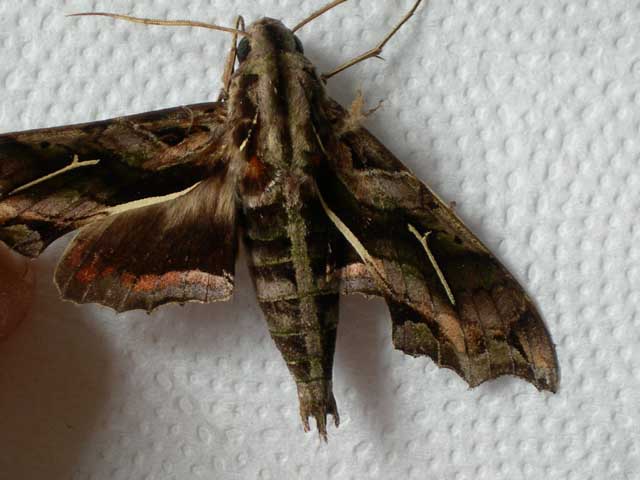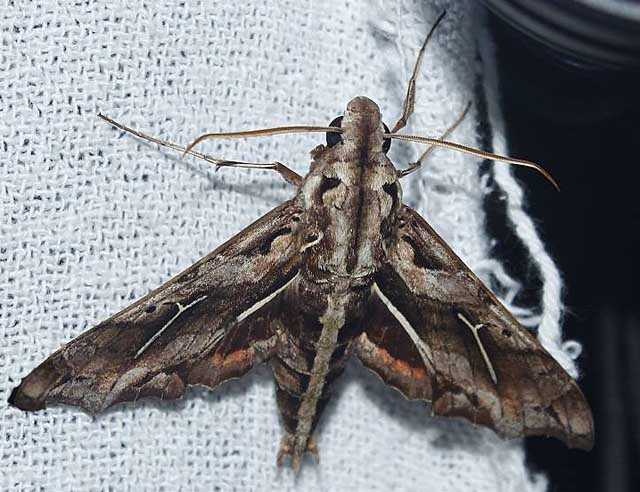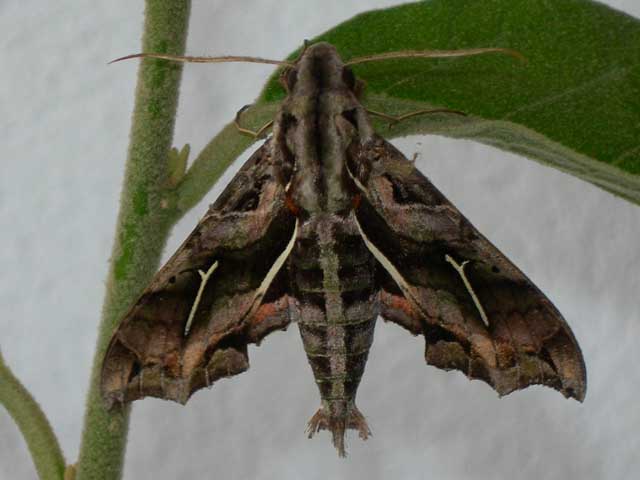DISTRIBUTION: Hemeroplanes longistriga (wingspan: mm)
flies in
Brazil (specimen type locality), Minas Gerais (LV);
Argentina: Misiones: Iguazu; Salta and
Ecuador. There are possibly populations in other countries as well, but the Ecuador report may be in error.

Hemeroplanes longistriga, Itanhandu, Minas Gerais, Brazil,
December 15, 2009, courtesy of Larry Valentine.
I believe the genus name comes from the Greek "Hemero" =
everyday life and "planes" = rhealm.
"Stryga" is derived from a Greek word meaning 'bird of the night'
or 'vampire'. It (more likely) could also be from the Latin, meaning streak or stripe.
"Longi" means long.
Of the four Hemeroplanes species, H. diffusa is the only one that does not have the silver streak basally forked;
Hemeroplanes longistriga is the only one with elongated extensions of the silver streak; Hemeroplanes ornatus
has upper yellow abodminal bands that are retricted and do not cross the entire abdomen, while those same upper yellow bands extend dorsally across
entire segments in triptolemus. Longistriga is without the bands.

Hemeroplanes longistriga, Sta Rita, Sapuca, Minas Gerais, Brazil,
March 16, 2019, courtesy of Luis F. Alberti
FLIGHT TIMES: There are probably at least two generations annually
with peak flights in January-February and again in June-July. Larry Valentine confirms a December flight in Minas Gerais, Brazil.
ECLOSION:
SCENTING AND MATING:Females call in the males with a pheromone released from a gland at the tip of the abdomen.
Use your browser "Back" button to return to the previous page.
Return to U. S. A. Table
Return to Sphingidae Index
Return to Dilophonotini Tribe
This page is brought to you by Bill Oehlke and the
WLSS. Pages are on space rented from Bizland. If you would like
to become a "Patron of the Sphingidae Site", contact Bill.
Please send sightings/images to Bill. I will do my best to respond to
requests for identification help.
 | 
Show appreciation for this site by clicking on flashing butterfly to the left.
The link will take you to a page with links to many insect sites. |
|




